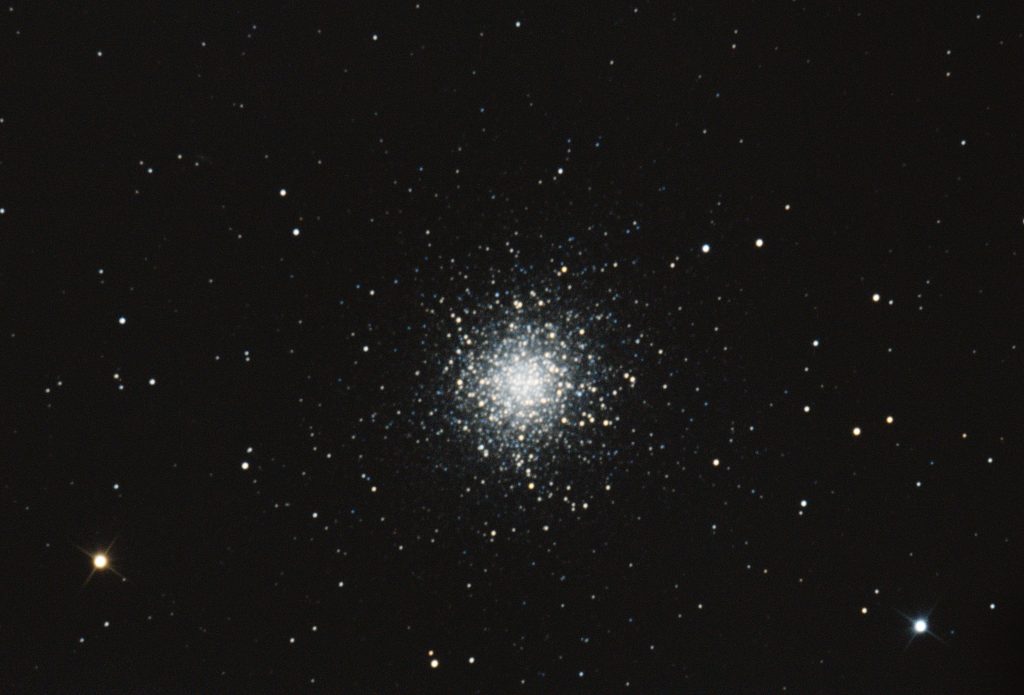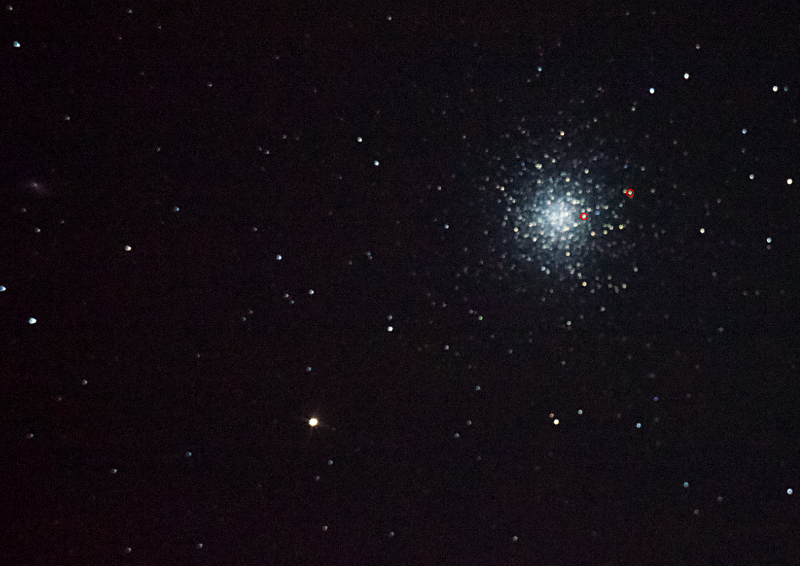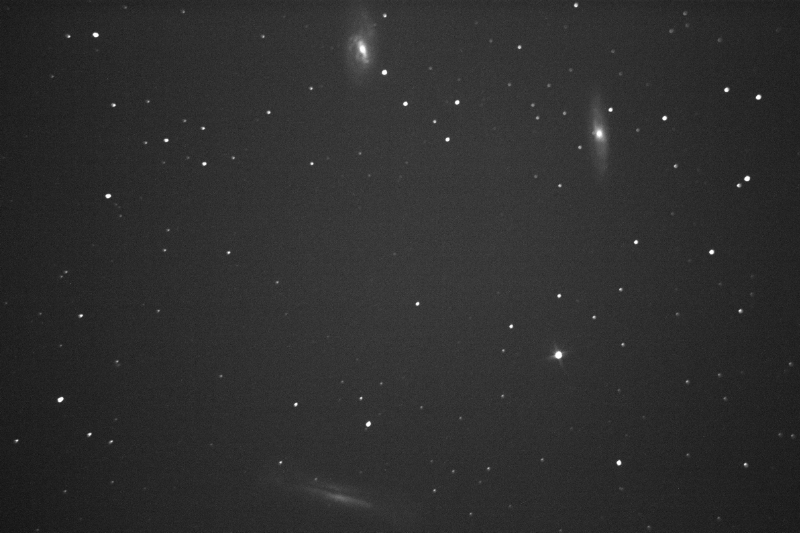Something that feels like a once in a lifetime event happened here in Bergen this spring. We had four consecutive days of clear skies, with very little wind and no moon!
Earlier on the blog I have expressed the desire to try and image Messier 13 on consecutive nights, to see if I could see the difference in magnitude in the variable stars in the cluster. Especially the variable star V1553 Her, which has a very convenient period of approximately 5 days. 4 days of observing would get me most of the period.
These 4 days were pretty late in spring (30th of March to 2nd or April), and observing had to be done after 10PM in a work week. Not ideal. Thankfully except from the usual tracking problems, there were few problems with the equipment. My own patience failed while doing focusing though, which resulted in two nights with good images, and two with not so great quality.
This was a bit problematic since I wanted to compare images over time, and since I had 40 good images from one night, and 10 from another there was a big difference in the brightness of the stars once I was done stacking images from each night. To account for this I did some brightness matching in post processing matching on the non variable stars of each frame.
The resulting 4 frame time-lapse looks like this.
I was pretty happy with this, as it shows the variability of not only one, but at least one more, and maybe even a third variable star I missed at first (Can you find it? This paper has charts to help). The change in brightness especially for V1553 Her was also much clearer then I expected. Great success!
The process to find the distance to the star from the magnitude and variability data is neat. Since V1553 Her is a Type II Cepheid (how this was determined is not clear to me, please add a comment if you know) which period is approximately 5 days the star has an absolute magnitude of approximately -1.5 according to this chart. The formula below (from here), should then give the distance \(d\).
$$ M_v = m – 2.5log((d/10)^2) $$
Looking at the images and the reference stars, a rough estimate would be that V1553 Her varies between 12 and 13 in apparent magnitude. Plugging in -1.5 for \(M_v\) and 12.5 for \(m\) gives the distance of 6310 parsecs, which is 500 parsecs off.
While I have not followed a very thorough process here, it is anyway nice to verify that my data seems to fit to reality. To get better data for deep space objects, I am evaluating to get a solid equatorial mount with either a small refractor or an 8 inch newtonian for imaging, and keep my dobsonian for visual and planetary. Once I do I hope a can revisit this project and get a time-lapse with much higher quality. Maybe do one which would also capture the really fast variables with down to 0.2 days period.



